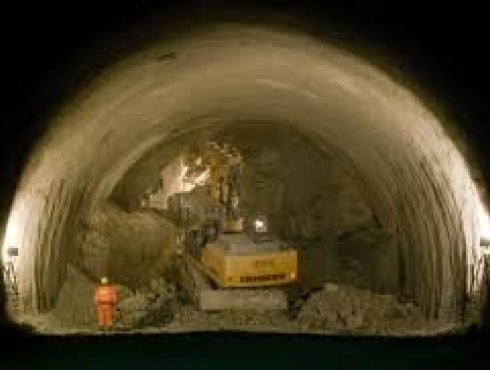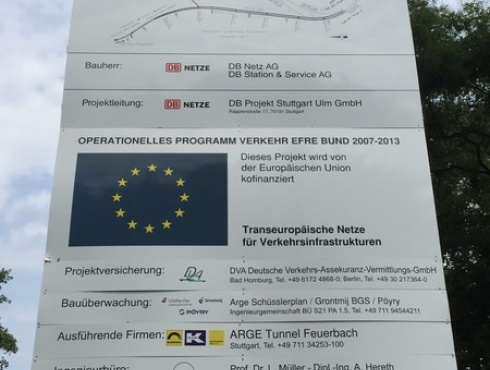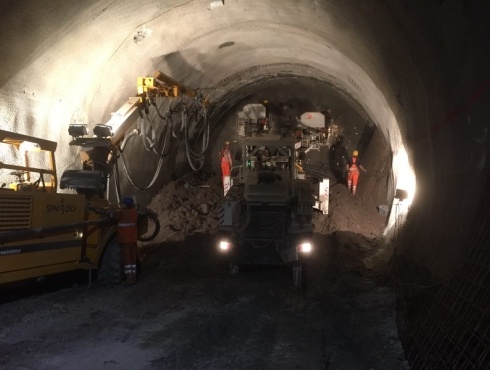Construction Project
Railway Project Stuttgart 21 - Intercity railway feeder line Bad Cannstatt - Tunnel Feuerbach |
Location
|
Client
|
Planning
- Prof. Dr. L. Muller - Dipl.-ing. A Hereth
|
Investment volume
- approx. EUR 187.5 million
|
Construction period
|
Contracted services BMG
- Claim management
- Project site management
|
Completed constructions
- Open tunnel construction (L = 1,011.00 m) with retaining walls, trough construction and pedestrian subways
- Closed tunnel construction (L = 2.449,00 m)
- Access tunnel Prague (L = 312.00 m)
- Dual-track fork construction Feuerbach (L = 320.00 m)
- Two single-track tubes as railway tunnel (L = 2,449.00 m)
- Numerous connecting constructions (L = 70.00 m)
- Breakthrough cross-section (A= 88 m2)
- Maximum height of tunnel cover (H = 150.00 m)
- Minimum height of tunnel cover (H = 10.00 m)
- Excavation volume (V = 475,000 m3)
|
Construction method
- Shotcrete construction method
- Using explosives and excavator to drive the tunnel
|
Special features
- Drive safety equipment using pipe arch technique, rock bolts, arch erectors, reinforcement steel mesh and shotcrete
- Due to limited space in northern section, dual-tracked tunnel (L/H = 230.00/7.10 m) designed as egg-shaped construction
- The subsequent single-track tunnel was driven by underground means with special cross section inner radius of R = 4.05 m
- At the overpass to the main train station there are tracks with a standard cross-section for a 2-track tunnel
- Smoke extraction shaft (T/D = 65.00/6.20 m) half way down the tunnel
- Design speed (VE = 160 km/h)
|
Utilization
- Connection between northern part of Stuttgart main train station with Feuerbach
- Expected traffic carried by 2025 approx. 94,700 travellers per day
|
Geology
- Gipskeuper (geological formation) with and without dilative soil layers
- The dilative Keuper can be found in what is referred to as anhydrite pockets
|







